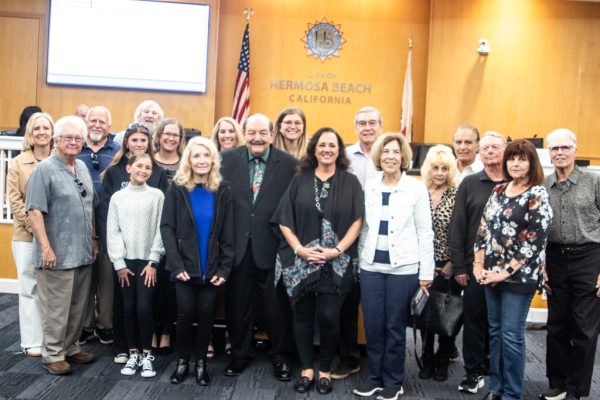E&B Natural Resources on Tuesday released an economic report that said the city of Hermosa Beach and its school district would receive about $519 million in financial benefits over 30 years if voters approve an oil drilling project at the city’s maintenance yard.
The report was conducted by the Berkeley Research Group, an independent economic consulting firm that contracted with E&B last spring to perform the analysis. Critics of the oil production proposal were skeptical of the report, and the city plans to conduct their own independent economic analysis and also fund a community dialogue program where residents can discuss the project and ask questions.
E&B is part of a settlement between the city and Macpherson Oil, which claimed Hermosa Beach breached its contract in 1998 when the City Council determined that drilling for oil could be unsafe. Macpherson was seeking up to $750 million in damages and the trial was set to begin last spring. However, E&B paid $30 million to Macpherson to have the opportunity to convince voters to support the oil project, and residents will go to the polls sometime in 2014 to decide.
Drawing from seven geologic reports, Bill Hamm of BRG said at a press conference that about 66 percent of the oil forecasted to be recovered would come from beneath the ocean, or the Tidelands. The remaining 34 percent is to be found beneath the city itself, or the Uplands.
The analysis indicated the city’s general fund would increase by $285 million. The Tidelands Trust account, which benefits the state of California, would increase by $234 million as a result of the oil drilling project, according to the analysis.
The projections includes additional property taxes from the drill site and gas royalties, but it is also dependent on oil quality and prices.
The Hermosa Beach City School District would receive about $11.7 million entirely through oil royalties from E&B, according to the analysis. The city would get about $490 million, in addition to $15 million in property tax revenue. The city owns the rights to the Tidelands oil. The uplands oil is owned by city, the school district and residents and non-residents in possession of private mineral rights.
Hamm said the economic analysis his organization conducted was “completely independent of E&B.”
“E&B may not agree with me,” Hamm said. “I think they are generally satisfied. That’s my impression.”
Hamm said his organization estimates that 35 million barrels could be safely and economically recovered, in addition to natural gas recovery.
“We tried to lean to the conservative side,” said Hamm, a former chief legislative analyst for the state of California.
“We do believe it is a report that was very well done there is a lot of information that’s in the report that hopefully is very understandable,” said E&B President Stephen Layton. “…We are happy that this report is being made public because it is as I see a very, very important piece of information for the voters to have.”
Former City Councilman Michael Keegan, who is opposed to oil production in Hermosa Beach, scoffed when told of the findings of E&B’s economic impact analysis. Keegan referenced the terms of the settlement between E&B, Macpherson and the city stipulating that if no oil is found, the city owes E&B $3.5 million.
“If they are so sure there’s all this oil out there, why do we have to give them $3 million if they don’t find oil?” Keegan said, adding that oil companies struck out looking for oil in the 1950s throughout the L.A. Basin. “To tell me I owe you money if you don’t find oil after you promised me millions, it’s very insulting to me.”
Hamm said that he and his researchers obtained copies of the geologic studies of the subterranean hydrocarbon reservoir in Hermosa Beach. The studies ranged in their estimates of recoverable oil, from two million barrels in a 1985 report to 45 million barrels in a 1997 report. Every report except one said there is oil beneath the city proper, Hamm said.
About $285 million of the revenue would go into the city’s general fund, Hamm said. About $234 million to would go into the Tidelands Trust fund.
Although most of the oil would come from the Tidelands, the city’s general fund would receive more than half of the revenue. The reason is that the general fund receives 37.5 percent of the royalties from the Tidelands oil, which is specified in a contract between the oil company and the city and approved by the State Lands Commission, Hamm said.
Money from the Tidelands Trust cannot be used for capital projects away from the coastal area, but there are many potential development projects that Hermosa Beach could pursue near the coast, Hamm said.
Hamm added there’s a legal restriction on how money derived from the Tidelands can be used, but that restriction can be altered in the state legislature.
If voters reject the oil proposal next year, then the city will pay $17.5 million to E&B. If the voters approve the oil project, the city will owe $3.5 million so long as the project is also approved by the California Coastal Commission, the State Lands Commission, the South Coast Air Quality Management District and the California Division of Oil, Gas and Geothermal Resources.
For more information: noebinhb.com, hermosabch.org and ebnr-hermosa.com.










